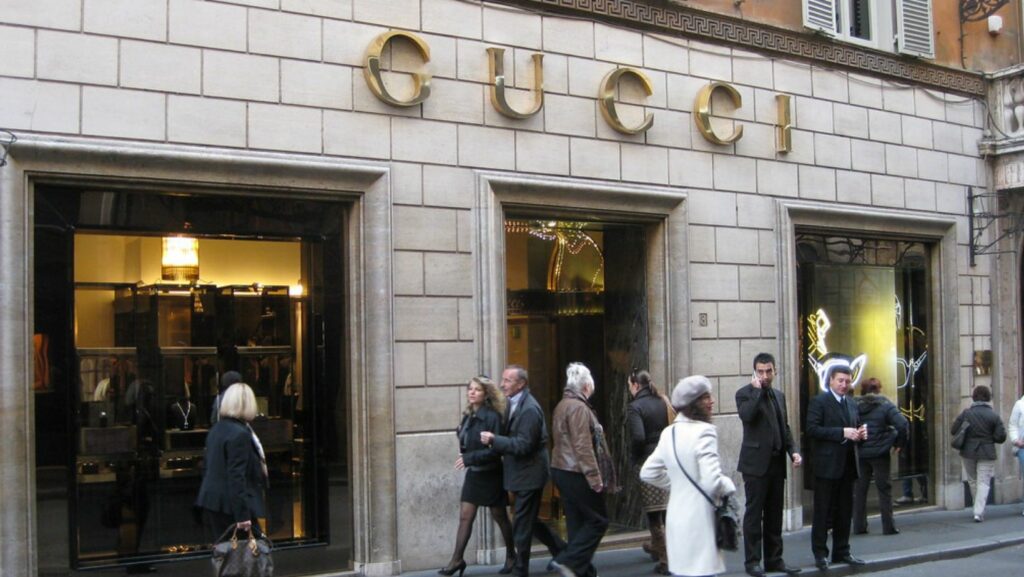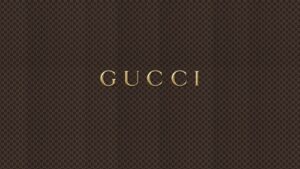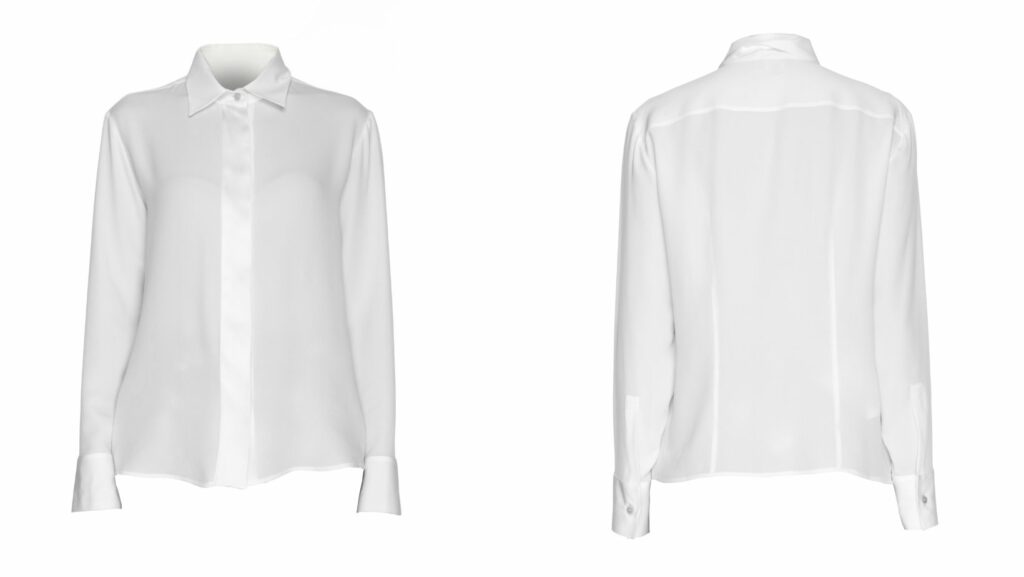
The iconic Gucci logo – a symbol of luxury and sophistication that’s recognized worldwide. But what’s the story behind this emblem of high fashion? And how has it managed to remain relevant throughout the years?
Logo:tk7mdtmnap4= Gucci

Gucci’s logo creation dates back to 1933, with the founder’s initials, “GG” interlocked to reflect understated elegance. Over the next three decades, the logo underwent minimal changes, retaining its classic design yet adapting to contemporary fashion trends.
Notably, in the 1980s, Gucci introduced script font under the standard ‘GG’ emblem. This move offered a more refined look, aligning Gucci’s image with modern luxurious elegance.
Two significant transformations occurred recently. In 2015, Gucci revealed a subtly tweaked version of the logo, showcasing a slightly thinner and softer typeface. It’s marked by a noticeable shift from a hard-edged, modern aesthetic to a gentler, vintage one. In 2018, Creative Director Alessandro Michele introduced an unconventional, punk-inspired logo. This stylization marked a bold departure from the brand’s conventional image, captivating a younger audience with its audacious edge.
Conclusively, Gucci’s logo evolution reflects the brand’s commitment to innovation and class, interacting with the dynamics of global fashion while preserving its elegant aura.
Symbolism in the Gucci Logo

Delving deeper into the aesthetics, the Gucci logo’s symbolic design exudes the essence of luxury and class. Devised from the initials ‘GG’ of its founder, it creates a symbol of craftsmanship, echoing the brand’s abilities in creating high-end fashion goods.
The interlocking design reveals the brand’s affinity for union and strength, hinting at the unbreakable bond between past traditions and innovative future trends. The introduction of the script font in the 1980s isn’t merely a stylistic alteration – it signifies Gucci’s seamless transition into the dynamic world of changing trends, balancing modernity with the sophistication of the past.
The transformations seen in 2015 and 2018 symbolize Gucci’s adaptability and boldness. The softer, vintage aesthetic adopted in 2015 implies a tribute to the antique charm of the fashion relics. In contrast, the punk-inspired design in 2018 is a clear nod to the rebellious, unapologetic spirit of youth culture.
These shifts exemplify the fashion house’s creativity in crafting contemporary designs that retain their iconic appeal. While maintaining Gucci’s elegant aura, they succeed in resonating with a diverse audience, showcasing Gucci’s acknowledgment of the changing preferences of global fashion connoisseurs.
Impact of the Gucci Logo on Brand Identity
The Gucci logo profoundly affects the brand’s identity. Carrying weight and recognition across the globe, it seals Gucci’s identity as a luxury-fashion powerhouse. Its symbol—an interlocked ‘GG’—anchors the brand in the minds of consumers, transcending language barriers.

Each logo evolution reinforced its relevance and broadened its appeal. The script font style adopted in the 1980s presented a refined, sophisticated image, while the 2015 and 2018 transformations represented Gucci’s flexibility and creativity, appealing to a wider audience.
Globally, consumers associate the Gucci logo with quality and luxury, demonstrating its effectiveness in branding. For instance, the soft vintage aesthetic introduced in 2015 aimed at a mature audience seeking classic elegance. Conversely, the bold, punk-inspired design in 2018 targeted millennials and Gen Z, showcasing how the brand successfully interests varied demographics. Consequently, through these dynamic changes, the logo sustains Gucci’s place in the fashion industry while reinforcing its commitment to innovation and adaptability.
Gucci Logo in Modern Media
The Gucci logo’s journey from its inception in 1933 to its current form is a testament to the brand’s adaptability and creativity. It’s become a symbol of luxury, sophistication, and elegance, resonating with consumers worldwide. The logo’s evolution reflects Gucci’s ability to balance tradition with innovation, a key factor in its global recognition. It’s not just a logo, but a brand identity that signifies craftsmanship, unity, and quality.
The transformations in 2015 and 2018 highlight the brand’s flexibility, showcasing a softer, vintage aesthetic and a bold, punk-inspired design. These changes have not only broadened the logo’s appeal but also reinforced Gucci’s commitment to staying relevant in the dynamic fashion industry. The Gucci logo, therefore, stands as a powerful branding tool, effectively communicating the brand’s ethos to a diverse audience.


